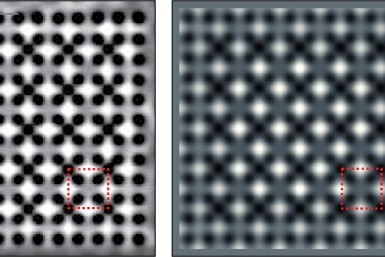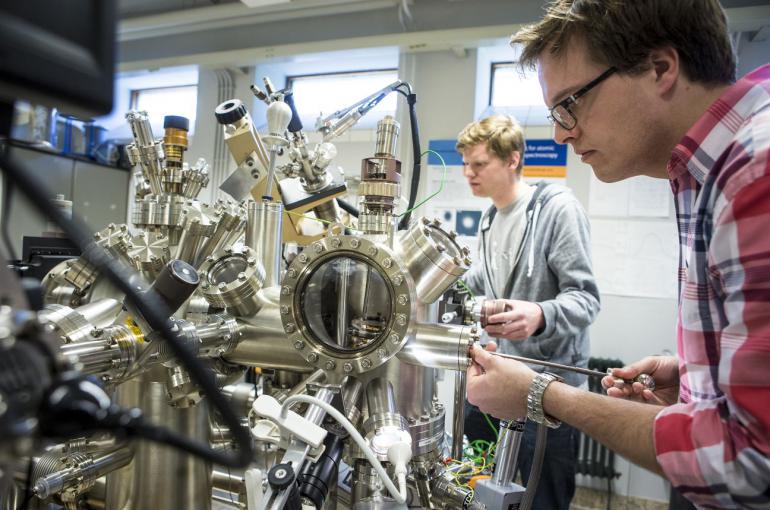25 April 2017
Physicists at Utrecht University have created a ‘quantum simulator’; a model system to study theoretical prognoses for a whole new class of materials. These ‘supermaterials’ include graphene, which has a two-dimensional structure and unique characteristics. The experiments conducted in Utrecht not only confirm the theoretical physicists’ predictions, but also provided new insights. They have discovered that at higher energy levels, a simple rectangular lattice has characteristics that are normally only observed in exotic materials. The results of their research are published in Nature Physics on 24 April 2017.
The characteristics of a material are determined by the atoms of which it is composed, and how they are organised. Calculations performed by theoretical physicists show that in certain two-dimensional structures, atoms can be organised in such a way that a wide range of super characteristics can be ‘made’. Until now, this research has been limited to theoretical predictions: many of the lattices that the physicists came up with simply did not exist in nature, nor have they been produced in the lab. However, using the method developed by the physicists in Utrecht, these results can now be tested experimentally.

Experimental (left) and theoretical (right) scanning tunnelling microscopy image of a Lieb lattice created by placing carbon monoxide molecules (black) on a surface particle-by-particle with atomic precision
Two-dimensional crystal of electrons
“The basic idea is that we can make a two-dimensional crystal of electrons in any form we want”, explains research leader Ingmar Swart. “That allows us to accurately determine the characteristics of the crystal, which enables us to conduct experiments on many of the ideas posited by our theoretical colleagues.”
Atomic precision
Swart and his team have created such a lattice, which is a few dozen nanometres wide, on a copper crystal. The surface of the crystal contains a large number of electrons, which are forced into certain positions on the surface by building a lattice of carbon monoxide molecules with atomic precision. “The way we do that can be compared to a finger pushing a peppermint candy back and forth across a table. But in this case, the finger is a needle with a point that is no bigger than a single atom”, Swart explains.
Phenomenon unveiled
The results so far show that the theoretical predictions are fairly accurate. However, the experiments have also unveiled a phenomenon that the theoretical physicists had not yet considered, and which may present new applications.
High-temperature superconductors
At higher energy levels, a simple rectangular grid appears to transform into a structure known as a ‘Lieb lattice’. “This Lieb lattice is the real lattice for certain high-temperature superconductors. It is therefore vital that we understand the characteristics and behaviour of electrons in this lattice”, explains theoretical physicist Prof. Cristiane Morais Smith.
Quantum simulator
There is still a long way to go from this model system used in Utrecht to new supermaterials, such as graphene. “But our system is a kind of ‘quantum simulator’, which we can use to test new theoretical ideas with the optimal degree of flexibility”, according to Morais Smith.
Publication Nature Physics
“Experimental realization and characterization of an electronic Lieb lattice”
Marlou R. Slot, Thomas S. Gardenier, Peter H. Jacobse, Guido C.P. van Miert, Sander N. Kempkes, Stephan J.M. Zevenhuizen, Cristiane Morais Smith, Daniel Vanmaekelbergh, Ingmar Swart*
Nature Physics, doi:10.1038/nphys4105, 24 April 2017
* All authors are affiliated with Utrecht University
This research was funded in part by NWO Physics.
More information













